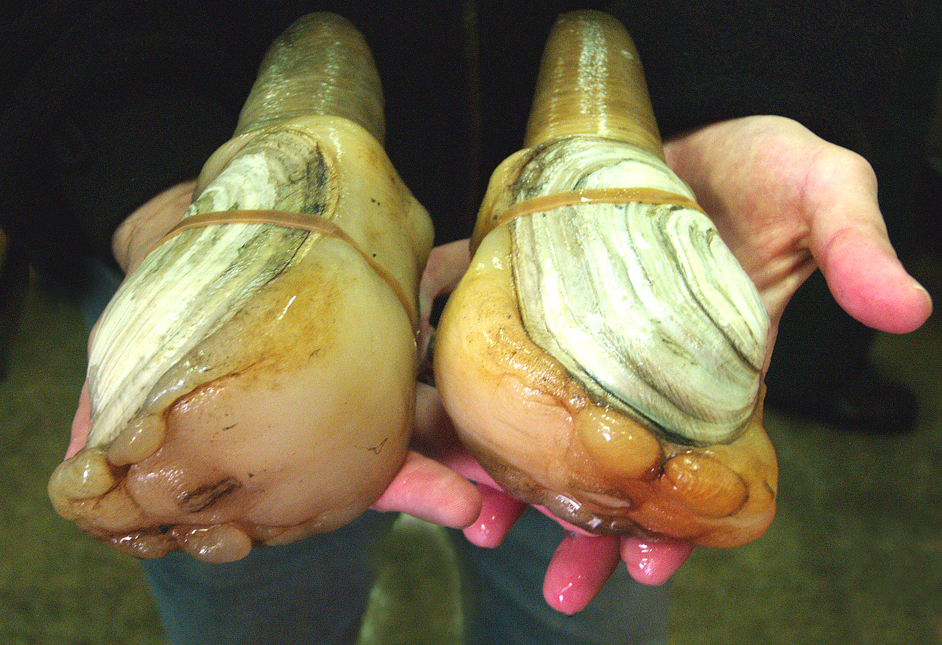

Annual harvest rates were originally set at 1% of the estimated original (pre-fishery) biomass, with the objective of taking no more than that replaced by recruitment of juveniles into the biomass. Since the early 1980s, a long-term approach has been used in the management of Geoduck stocks. Stock assessment, science and traditional knowledge - IFMP Section 2 and 3 Opportunities to enter into this industry are being provided based on existing policies and protocols. There has been interest in Geoduck aquaculture in British Columbia since the early 1990s. The recreational fishery is open coastwide year-round, subject to sanitary and biotoxin closures, and is an open entry fishery with a daily bag limit, two-day possession limit and gear limits. The commercial fishery takes place along the majority of the British Columbia coast in units called Geoduck Management Areas (GMA) which are comprised of portions of Areas and Subareas, as described in the Pacific Fishery Management Area Regulations. Other management measures in place for the fishery include area quotas, rotational fishing of most areas, the use of an On-Grounds Monitor and a precautionary harvest rate. All commercial landings are tracked using a coastwide Dockside Monitoring Program (DMP). The commercial fishery operates under a Total Allowable Catch (TAC), broken up into transferable quota blocks. Geoduck and Horse Clam are harvested by divers. The fishery occurs year round to provide consistent product to markets, primarily in China. The commercial fishery is a limited entry fishery with 55 licence eligibilities. The Geoduck and Horse Clam fishery began in 1976. General overview/Introduction - IFMP Section 1

In the event that an IFMP is inconsistent with obligations under land claims agreements, the provisions of the land claims agreements will prevail to the extent of the inconsistency.

Where DFO is responsible for implementing obligations under land claims agreements, the IFMP will be implemented in a manner consistent with these obligations. The Minister can, for reasons of conservation or for any other valid reasons, modify any provision of the IFMP in accordance with the powers granted pursuant to the Fisheries Act. The IFMP can be modified at any time and does not fetter the Minister's discretionary powers set out in the Fisheries Act. This IFMP summary is not a legally binding instrument which can form the basis of a legal challenge. This IFMP provides a common understanding of the basic “rules” for the sustainable management of the fisheries resource. This document also serves to communicate the basic information on the fishery and its management to DFO staff, legislated co-management boards and other stakeholders.
PACIFIC GEO DUCK FULL
The purpose of this Integrated Fisheries Management Plan (IFMP) summary is to provide a brief overview of the information found in the full IFMP. IFMP Sections 5, 6 and 8 - Management issues, objectives and measures.IFMP Section 4 - Economic profile of the fishery.IFMP Section 2 and 3 - Stock assessment, science and traditional knowledge.IFMP Section 1 - General overview/introduction.Full text of Integrated fisheries management plan: Geoduck and horse clam - Pacific Region, 2022/2023 ( PDF, 9.9 MB) On this page


 0 kommentar(er)
0 kommentar(er)
